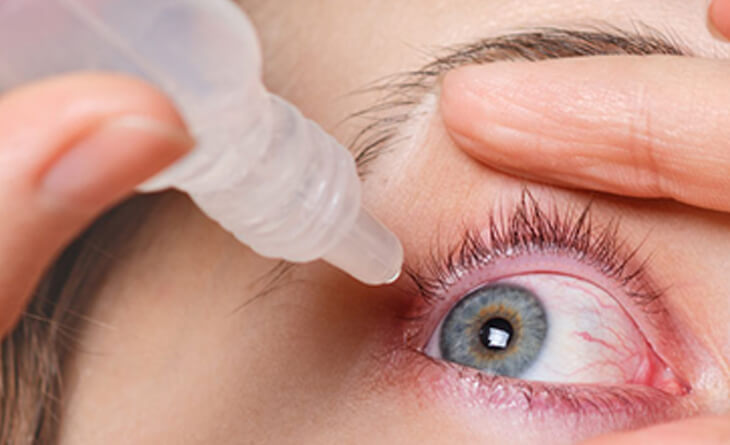Ocular Surface Diseases
Ocular surface diseases refer to conditions affecting the eye’s surface. Some of the most common diseases are dry eye and computer vision syndrome. Dry eye happens when your tears do not adequately lubricate your eyes either due to lower production of tears or abnormal quality of tears. When this happens, you need dry eye treatment to combat any possible inflammation and damage to the eye’s surface.
As a modern ophthalmologist, Dr Anisha Gupta understands the roles technology and screen time play in our lives. She frequently and effectively treats dry eye disease through numerous techniques with proven results.
Computer Vision Syndrome (CVS) and Dry Eye Treatment
In the digital world we live in today, CVS is commonplace, resulting in dry eyes and several other problems, such as headaches, blurred vision, eye redness, itching, watering, eye fatigue and eye strain. If you feel any of these after looking at a screen, you may be experiencing CVS and should visit an ophthalmologist.
Some effective and high-quality treatments for CVS include:

Another effective way to keep CVS at bay is by following the 20-20-20 rule. This rule means taking a break every 20 minutes to view something 20 feet away for 20 seconds. You may also need to make certain lifestyle changes to reduce eye strain during screen time, like using anti-glare glasses, avoid direct AC vent falling on the eyes etc.
If you do not incorporate your ophthalmologist’s recommendations, you risk developing dry eye.
When do you need dry eye treatment?
Two main conditions cause dry eyes – decreased tear production and increased tear evaporation. Decreased tear production is usually a result of ageing, a symptom of another systemic disease, or a side effect of medication.
Meanwhile, increased tear evaporation happens when the oil film produced by the meibomian glands gets clogged or the tear film is not stable on the eye. This may occur due to a gland dysfunction, blinking less often, computer vision syndrome, eyelid problems and eye allergies or a vitamin A deficiency.
You may need dry eye treatment if you experience the following symptoms:
You should visit an ophthalmologist if you experience any of these symptoms. Especially if they persist, you may need more rigorous treatment for effective results.
Different Dry Eye Treatment Paths
Today, you can take several treatment paths to combat dry eyes. Based on your consultation with an ophthalmologist, you may choose a medication or procedure-based treatment path. Both paths are safe and sophisticated, with high-quality results for every patient.
Dry Eye Treatment with Medication
Medication and drug therapy have proven highly effective in treating and preventing dry eyes. If you and your ophthalmologist opt for this treatment method, you will encounter the following solutions:
If dry eye is a side effect of some medication you take, Dr Gupta may give you an alternate prescription that avoids dry eye, automatically improving your ocular health.
Many times, dry eye is a symptom of a systemic condition, a connective tissue disorder or autoimmune disease. You may be referred to the specific doctor for that disease for treatment as well.

Dry Eye Treatment Procedures
If you decide to take the procedural route, you still have many highly effective treatments. Depending on your condition’s severity, your doctor chooses the optimal procedure for your needs.
The procedures used to treat dry eyes include the following:
Regardless of your ocular surface disease, an expert ophthalmologist ensures you get the ideal treatment. Your condition’s severity increases with time so combating it in its early stages is a must for the most effective results.
As a leading ophthalmologist in Delhi, Dr Anisha Gupta ensures that all her patients get the best results under her care. Her patient-centric approach ensures safety and comfort above all else, promising excellent results with desirable procedures for everyone.
If you face any symptoms we discussed here, contact us today and schedule your dry eye treatment now!
